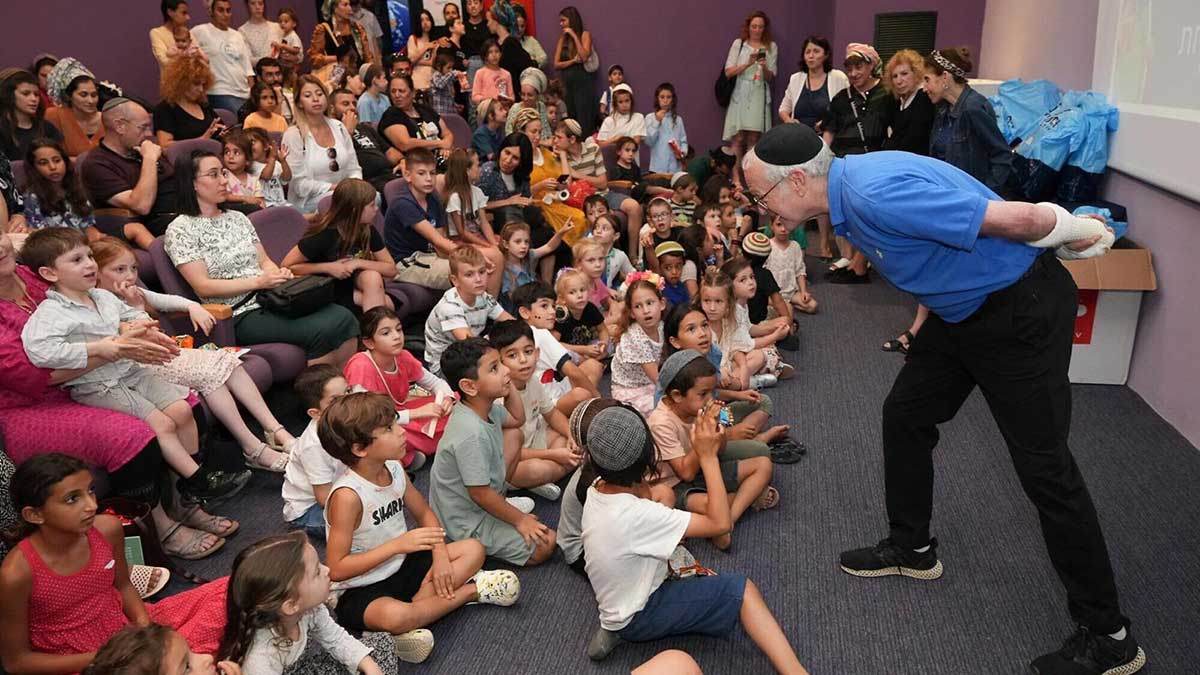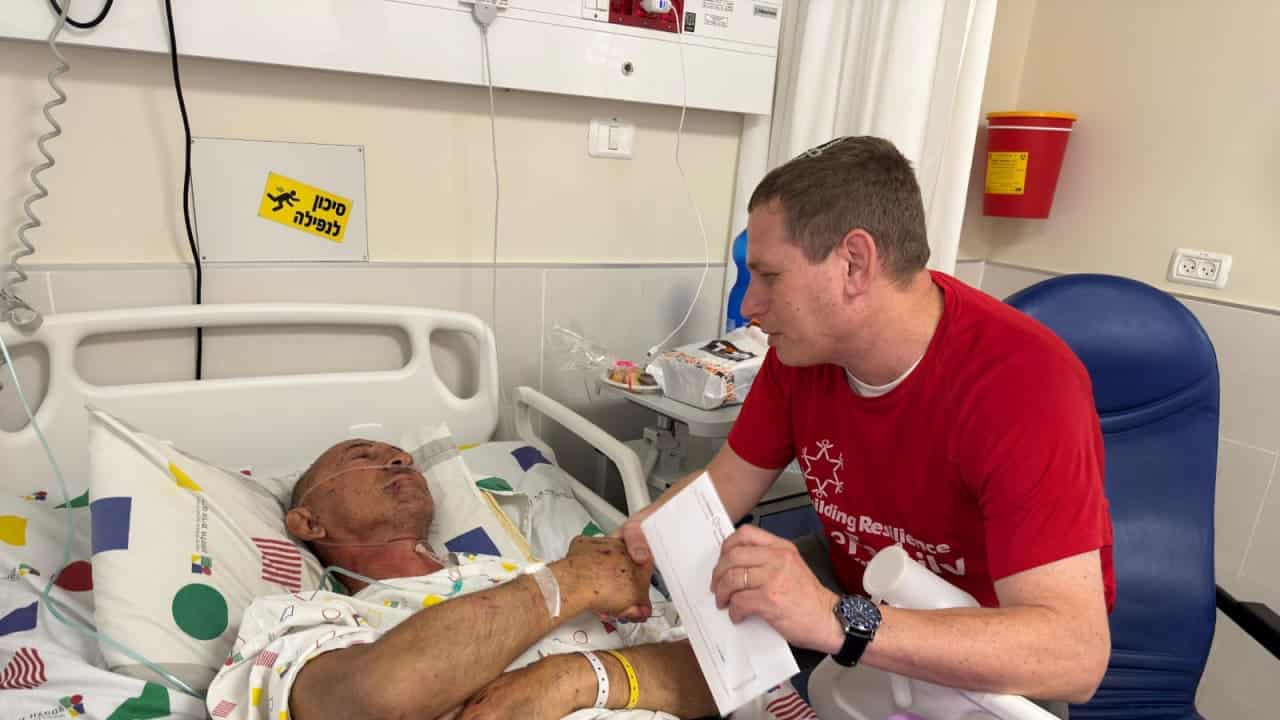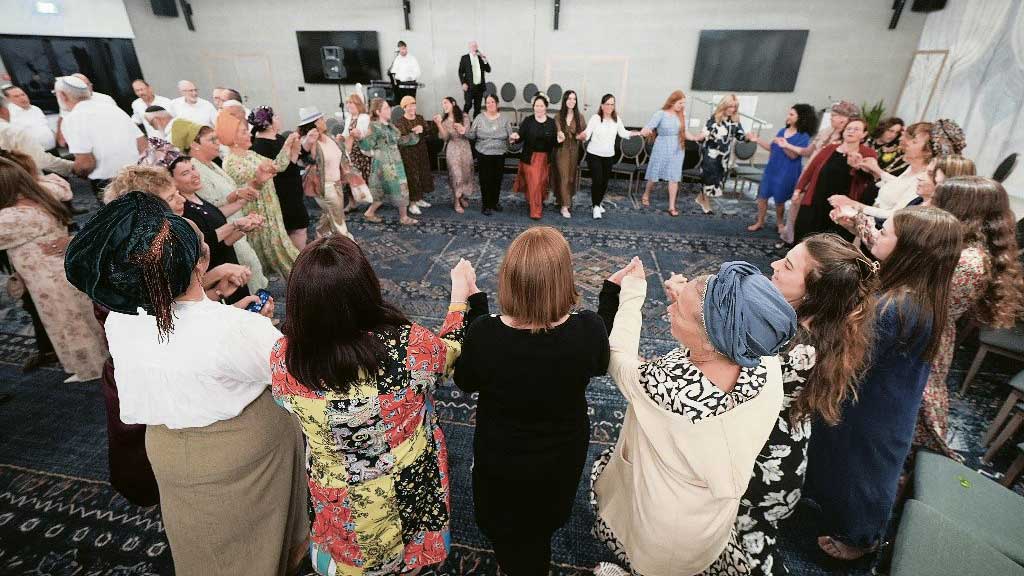table of contents
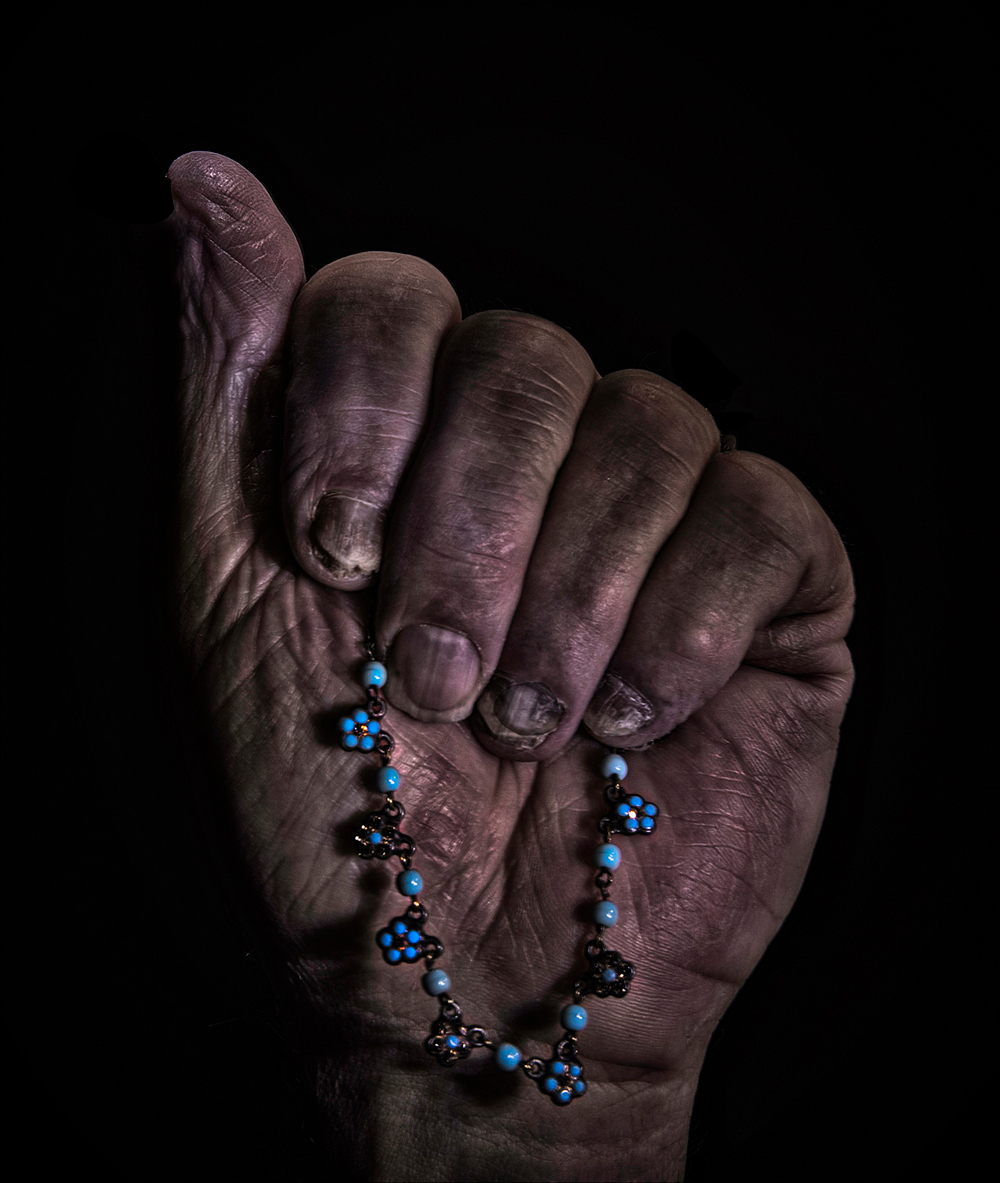
Photograph of a defiant Shimon holding his daughter Rivka’s necklace for all to see. He is bowed, but still standing. Taken by Jay Garfinkel
The walls of the main lobby of the Jerusalem Theater cultural complex are often a showcase for Israeli artists and photographers — a scenic byway on the way to hear the orchestra or see a play. It is likely that the most beautiful photos the theater will ever show are the breathtakingly awesome ones that recently lined the walls.
Called “Heirlooms: Memories and Cherished Objects,” the 34 photographs by former Washingtonian and now Jerusalemite Jay Garfinkel are of items that belonged to victims of terror over the last two decades.
In honor of Shlomit Krigman, killed at 24, the photograph is a watch stopped at the time two terrorists stabbed her to death on her way to purchase a winter coat. For Tali Hatuel and her four young daughters, killed by terrorists who fired at their car, it was the key to the home they had lived in but that was destroyed — after they died — when Israel pulled out of their settlement of Gush Katif in the Gaza Strip. For Odelia Hubara, killed at a Tel Aviv night club when a suicide bomber blew himself up, it is the coffee cup she used at her office that is now used by her mother. Posed against a Lucite table, the photo shows two images of the same cup.
Look closely at each photograph and you see not just an item handed over by grieving parents, but the conversation that Garfinkel, himself a grieving father, had with each family in their homes to discuss their child — their life, the circumstances of their death and an item that represented who they were and who they are each day forevermore to their families.
The idea for the exhibit at the theater and a book of the same name published last year (available on Amazon) grew out of the grief Garfinkel and his wife, Renee, came to know after the death of their son, Elon, three years ago, of heart disease. After packing up Elon’s belongings from his Washington apartment, the Garfinkels were left with three suitcases of their son’s belongings and Jay wondered what to do with them.
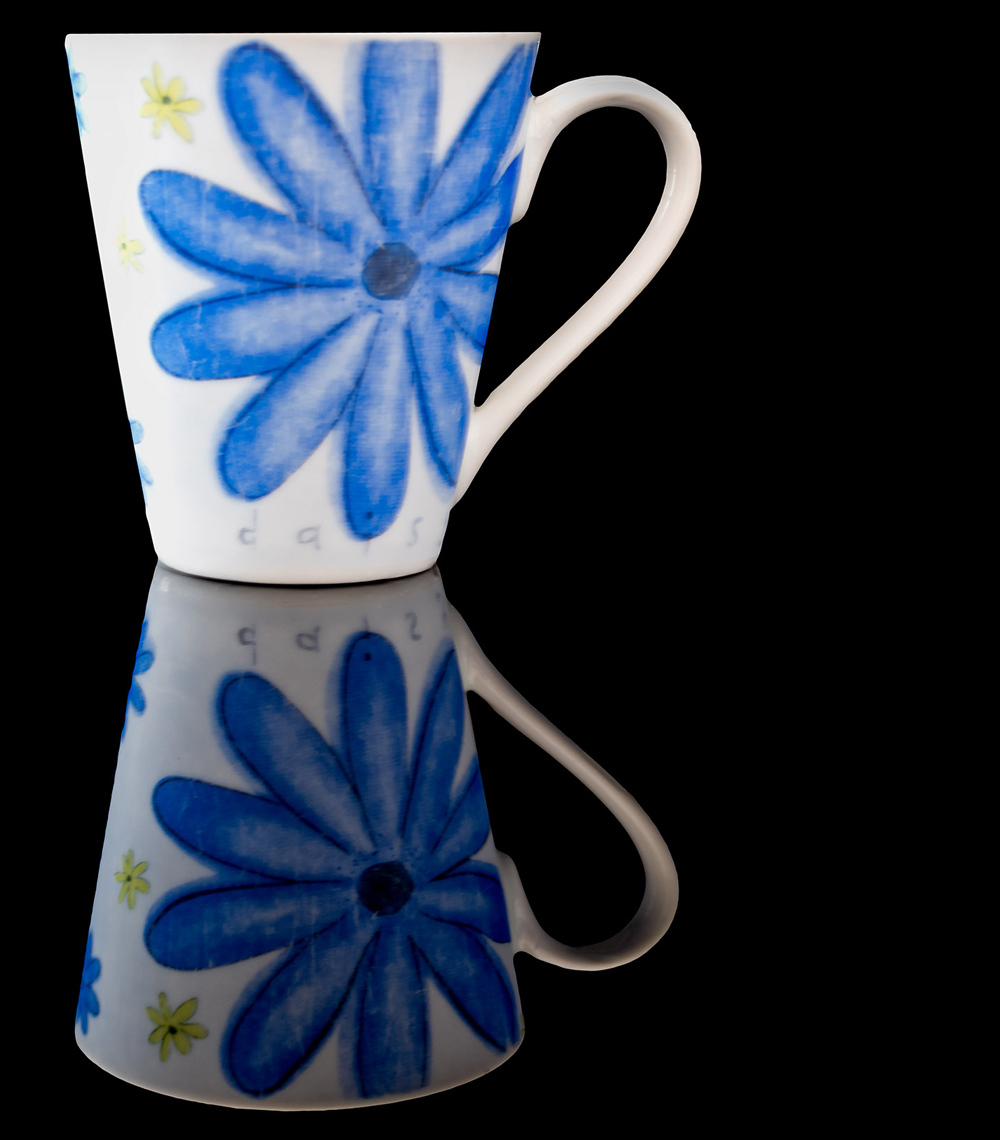
A coffee cup that a mother found in her daughter’s office after her daughter’s murder. Taken by Jay Garfinkel
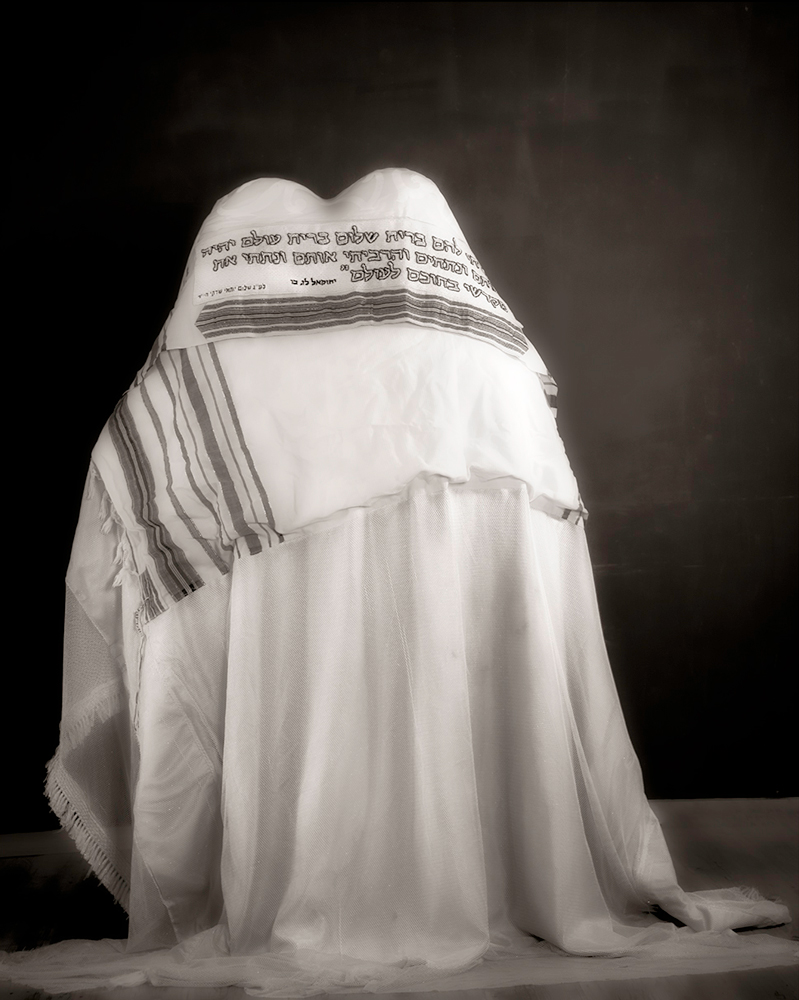
Shalom Sherki’s tallit, which his parents tie to their family’s chuppah poles to honor his memory. Taken by Jay Garfinkel
In the book, Garfinkel writes: “as a visual artist, I decided to photograph a few of my son’s cherished personal objects in a way that would fill my soul. I created a series of artistic images with possessions from Elon’s life and hung the photographs in my apartment for the rest of our family and friends to see. It was a way of sharing his memory.”
A friend who saw the work introduced Garfinkel to Marc Belzberg, a co-founder with his wife Chantal and daughter Michal of One Family, which supports families in Israel whose lives have been upended by acts of terror that killed or injured a family member. Chantal Belzberg chose more than 30 families who had lost a child in a terror attack or in the army. Garfinkel, together with a driver and social worker, drove all over the country to meet these parents, hear their stories and look at items that told a story of the family members who had died.
“There are of course so many more families with stories to tell,” says Chantal Belzberg. “We tried to represent everyone by connecting with families who are religious, secular, Jewish, not Jewish, over the Green Line and within the Green Line, immigrants and families who have been in Israel for generations.”
In Garfinkel’s hands, and through his camera’s lens, the photographs show someone loved someone with passion, someone who once lived a life, someone who matters.
“All the impressions that have accumulated during our meeting direct me how to bring the picture to life,” says Garfinkel.
The first photo in the exhibit, and on the cover of the book, is a leather jacket that Elon Garfinkel wore for years. The photo his father took shows its age and weathering but a clearly favorite item of its wearer.
“It was a frequent topic of conversation,” says Renee Garfinkel, a psychologist, writer, Middle East television commentator and host of The New Books Network’s Van Leer Jerusalem Series on Ideas.
Even without the background of the book and the exhibit captions, the photos are powerful and hint at deeper layers. Those layers take one’s breath away. Rivka Holtzberg and her husband, Gavriel, were the shlichim, or emissaries, of the Chabad House in Mumbai. They were killed in 2008 when attackers broke into the Chabad House and killed 173 people.
Saved by his Indian nanny was their then 2-year-old son, Moshe, who now lives with his grandparents. For their daughter’s photo, Rivka’s parents, Rabbi Shimon and Yehudit Rosenberg of Afula, chose the vivid blue necklace they had given their daughter on her wedding day. The necklace, broken during the attack, was given back to the Rosenbergs by the Israeli team that was dispatched to identify the bodies at the Chabad House.
The jewelry designer who made the necklace read in the newspaper that it was broken and repaired it for the Rosenbergs. It is now intended for Moshe to one day give to his bride.
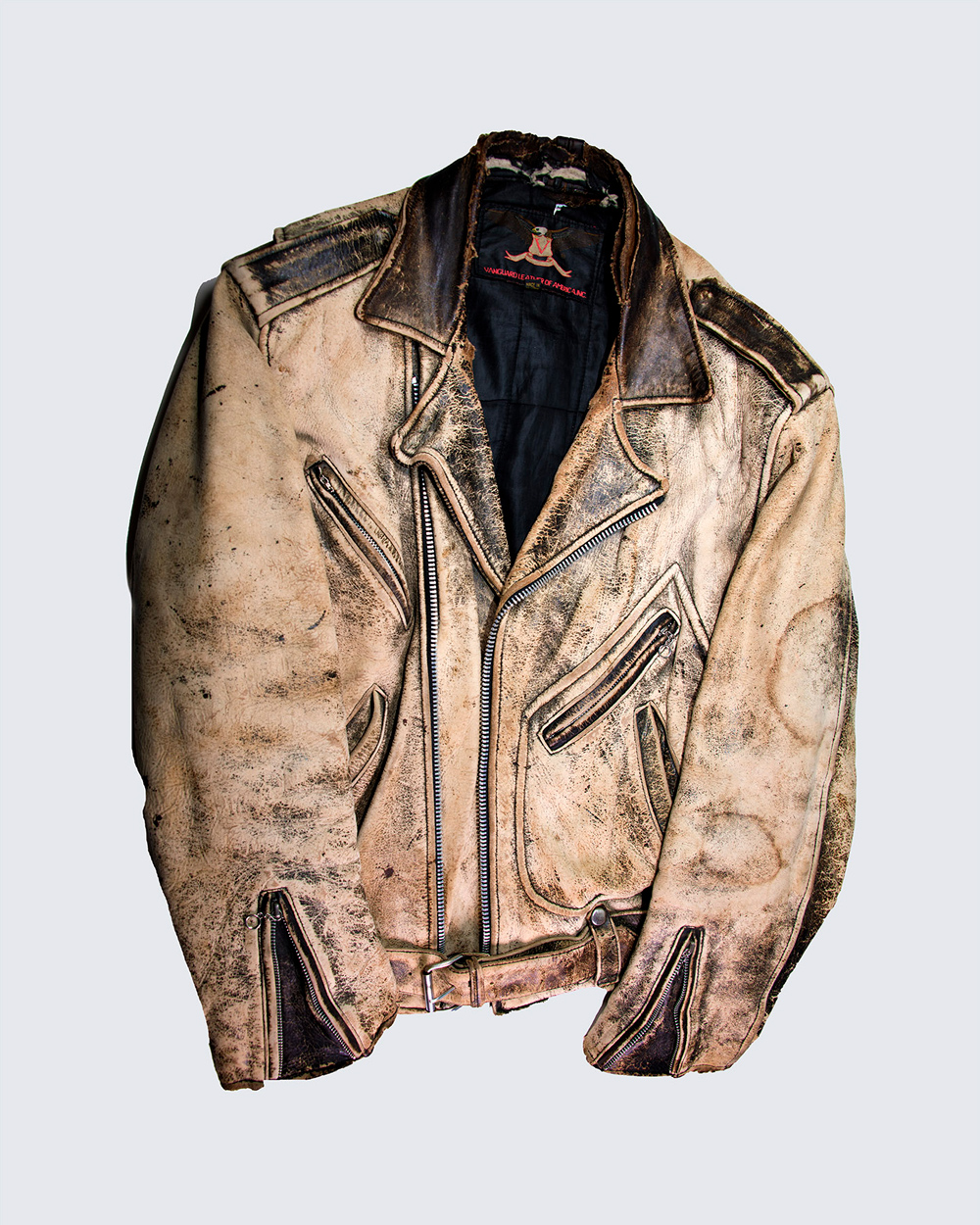
Elon Garfinkel’s leather jacket. Taken by Jay Garfinkel
The photo Garfinkel decided on is of the weathered hand of Rabbi Rosenberg holding his daughter’s wedding day necklace. “This photograph is of a defiant Shimon holding his daughter Rivka’s necklace for all to see. He is bowed, but still standing,” writes Garfinkel. Rabbi Rosenberg spoke at the exhibit’s opening in early December, and told the audience of invited guests, including many families whose children’s treasures were included in the exhibit, “every picture is a living witness.”
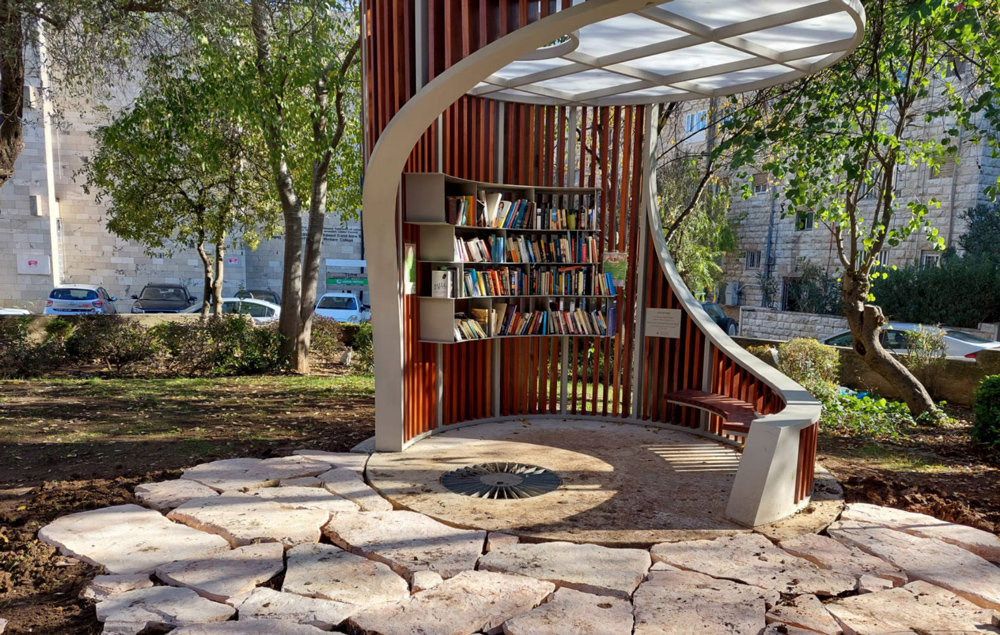
Elon Garfinkel Community Library. Courtesy of Jay Garfinkel
When Garfinkel visited their home in the Givat Shaul neighborhood of Jerusalem, Ronit and Rabbi Uri Sherki brought out the tallit of their son, Shalom, killed in 2015 at the age of 25 in a terrorist car-ramming at a bus stop on the eve of that year’s Holocaust Remembrance Day. The Sherkis have tied Shalom’s tallit to chuppah poles so that Shalom’s memory can be present at the happy events of his family. For the photo, Garfinkel draped Shalom’s parents in the tallit. “It represents that they are whole (the Hebrew word is ‘shalem’ which shares the root of the word and name Shalom) and Shalom’s absence is a continuous presence,” writes Garfinkel — the very same words Garfinkel writes about Elon in the book’s dedication.
Many of the families whose children’s mementos were photographed attended the opening, stood quietly beside their photographs and greeted each other, many having met at One Family meetings and activities over the years. Warm hugs among them underscored the remarks by Jerusalem deputy mayor Hagit Moshe who said the families were united “not by blood but by love.”
The photo of Elon’s jacket is not the only tribute to their son the Garfinkels have added to Jerusalem. There is also a bench near the King David Hotel, as well as a newly installed outdoor library at Sokolov Park near the Garfinkels’ Jerusalem home.
On weekdays parents snap photos of their children sitting and reading in the shady park, effectively continuing the theme of the Jerusalem Theater exhibit: of children so loved.
Pandemic permitting, the exhibit will travel to other cities in Israel, with the schedule posted on the One Family website.

